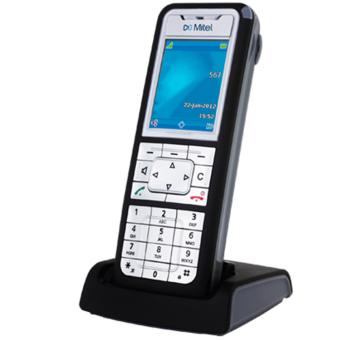- Download Visual Presenter V2 Cameras Wireless
- Download Visual Presenter V2 Cameras Download
- Download Visual Presenter V2 Cameras Nikon

The FlyCapture® Software Development Kit (SDK) provides a common software interface to control and acquire images for FLIR area scan USB 3.1, GigE, FireWire, and USB 2.0 cameras using the same API under 32- or 64-bit Windows or Linux. Note: Blackfly S cameras use our latest SDK: Spinnaker. Spinnaker also supports all USB 3.1 and GigE area scan cameras. Joy-DocCam V500s Visual Presenter. 8 Mega Pixels HD autofocus camera, high-brightness LED lights 2. Flexible two arms with 5 joints 3. Almost A3 shooting area, supports macro photography 4. Built-in microphone, 1080P HD quality, audio and video recording and storage into SD card 5. Infrared remote control 6. Seamlessly compatible with touch screen / interactive whiteboard / projector. Versatile Ultra Compact Visual Presenter Designed for Presentations On the Go! Visual presenter MO-1 is a completely new concept mobile document camera designed for instructions and presentations anywhere in or out of the classroom or office. Smaller than a business envelope, the MO-1 is one of the highest quality imaging mobile presenters on the market. Exclusively designed for use with ELMO products, ELMO Interactive Toolbox (EIT) is our most versatile presentation software to date. EIT features a movable navigation bar with key features such as draw, highlight, erase, annotate, capture still images, record video, switch image source and more, giving you maximum customization and control of your presentation screen.


These drivers have been distributed through the Windows Update system. The offer the latest from Realtek and Microsoft to ensure optimal performance for your devices.
Here's other similar drivers that are different versions or releases for different operating systems:Download Visual Presenter V2 Cameras Wireless
- January 2, 2019
- Windows (all)
- 10.3 MB
- January 2, 2019
- Windows (all)
- 10.3 MB
- July 27, 2017
- Windows 7
- 10.3 MB
- July 5, 2017
- Windows (all)
- 10.1 MB
- July 12, 2017
- Windows (all)
- 10.2 MB
- May 10, 2017
- Windows (all)
- 10.2 MB
- June 26, 2017
- Windows (all)
- 32.4 MB
- March 23, 2017
- Windows 7/8/10
- 10.1 MB
- March 24, 2017
- Windows (all)
- 10.1 MB
- January 20, 2017
- Windows (all)
- 10.0 MB

Download Visual Presenter V2 Cameras Download
This tutorial shows how to use the Raspberry Pi 2 camera from C++ programs developed with Visual Studio and VisualGDB. Before you begin, install VisualGDB 5.0r5 or later. We will also show how to get the latest Raspberry Pi Jessie image and use the corresponding cross-toolchain for faster compilation.
Download Visual Presenter V2 Cameras Nikon
- Download the Raspberry Pi Jessie image and write it to the SD card. Ensure you select the “Extend the Ext2FS partition” checkbox so that the Linux partition can fit the entire SD card:
- Start Visual Studio and open the VisualGDB Linux project Wizard:
- Select “Application -> Use GNU Make” to create a new application project:
- If you have not installed the Jessie toolchain for Raspberry Pi yet, you can select “download more toolchains” and then pick the toolchain from the list. Ensure you select the latest Jessie toolchain:
- Select the connection settings in the “Deployment computer” field or choose “Create a new SSH connection” if you have not connected to your Raspberry Pi from VisualGDB before:
- Press “Finish” to create your project. VisualGDB will test the toolchain and ensure that it can build code that runs on your Raspberry Pi without any problems:
- VisualGDB may detect that the PATH variable is configured differently for interactive SSH sessions and commands started via SSH, potentially interfering with GDB debugging. Select “Fix value” to resolve this automatically:
- Build your project, set a breakpoint on the return statement and run it with F5. Check the output in the “gdbserver” window for the “Hello, World” message:
- Now we will configure the Raspberry Pi to use the camera module. Open the SSH Console via Debug->Windows->SSH Console:
- Click on the “open a new shell” link and run the “sudo raspi-config” command. Then use the arrow keys to enable the camera module:
- Select “Finish” and shutdown your Raspberry Pi. Once the power is unplugged, connect the camera module as shown below:
- We will use the Raspicam library from SourceForge to connect to the camera from C++ code. Download the latest source package and extract it somewhere on your Windows machine. Now we will import it to your Visual Studio solution by adding another project:
- Specify the name and location for the wrapper project. It can be a different folder than the one with the sources of raspicam:
- On the first page of the wizard select “Import a project”:
- The next page will show the last used toolchain and computer locations. Click on the “cross-compiler” option and VisualGDB will load the last used settings automatically:
- On the last page specify the location of CMake on your Windows machine (you can download CMake for Windows here) and the directory where you have extracted the raspicam library:
- Before you can build the raspicam library, you need to download the /opt/vc directory from Raspberry Pi to the toolchain sysroot folder. This can be done by opening VisualGDB Project Properties, going to the Makefile Settings page, clicking “Synchronize Sysroot” and adding the “/opt/vc” folder to the folder list:
- The raspicam library checks the CMAKE_SYSTEM_PROCESSOR library to determine when it’s being built on Raspberry Pi. To support this, we need to specify the variable manually in the CMake project properties:
- If you try building the project now, CMake will complain that the mmal libraries are not found:
- This happens because the library search paths in CMakeLists.txt are hardcoded to /opt/vc and do not use the sysroot variable. Modify CMakeLists.txt accordingly to fix this:
